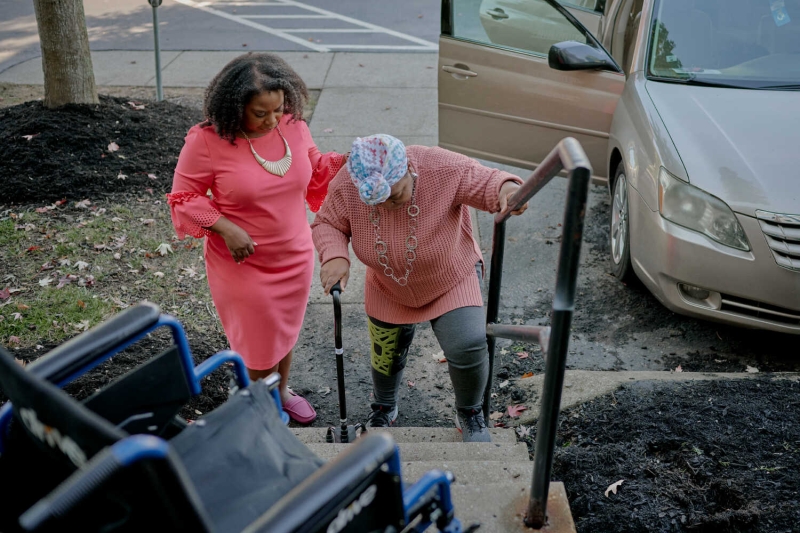Contents
Dying Broke

Dying Broke
The United States has no coherent system for providing long-term care, leading many who are aging to struggle to stay independent or to rely on a patchwork of solutions.
Reed Abelson is a health care reporter for The Times and Jordan Rau is a reporter for KFF Health News. They interviewed dozens of families and experts for the Dying Broke series, a joint project on long-term care.
Margaret Newcomb, 69, a retired French teacher, is desperately trying to protect her retirement savings by caring for her 82-year-old husband, who has severe dementia, at home in Seattle. She used to fear his disease-induced paranoia, but now he’s so frail and confused that he wanders away with no idea of how to find his way home. He gets lost so often that she attaches a tag to his shoelace with her phone number.
Open this article in the New York Times Audio app on iOS.
Feylyn Lewis, 35, sacrificed a promising career as a research director in England to return home to Nashville after her mother had a debilitating stroke. They ran up $15,000 in medical and credit card debt while she took on the role of caretaker.
Sheila Littleton, 30, brought her grandfather with dementia to her family home in Houston, then spent months fruitlessly trying to place him in a nursing home with Medicaid coverage. She eventually abandoned him at a psychiatric hospital to force the system to act.
“That was terrible,” she said. “I had to do it.”
Millions of families are facing such daunting life choices — and potential financial ruin — as the escalating costs of in-home care, assisted-living facilities and nursing homes devour the savings and incomes of older Americans and their relatives.
“People are exposed to the possibility of depleting almost all their wealth,” said Richard W. Johnson, director of the program on retirement policy at the Urban Institute.
Those who needed long-term care were more likely to die broke
Among Americans who had $171,365 to $1.8 million in savings at age 65, those with greater long-term care needs were much more likely to deplete their savings than those who did not need long-term care.
Notes: The percent who died broke is the percent of each group of people who reported a net worth of less than $3,000 by the time they died. Groups of people were those who at age 65 reported to the Health and Retirement Study a net worth in the 50th to 95th percentile, or $171,365 to $1,827,765 in 2020 inflation adjusted dollars, and who subsequently either needed or did not need long-term care. Read the full methodology.
Source: New York Times/KFF Health News analysis of Health and Retirement Study data from 2000 to 2021.
By Albert Sun and Holly K. Hacker
Many older adults struggled with basic tasks
Almost 20 percent of those 65 and older reported having difficulty with one or more basic daily tasks. Of those, many were not receiving help.
Source: New York Times/KFF Health News analysis of Health and Retirement Study data from 2020 and 2021
By Albert Sun and Holly K. Hacker
Rising costs for long-term care
The median annual cost of all types of long-term care has risen faster than inflation over the last two decades.
Notes: Costs are adjusted for inflation and shown in 2021 dollars. Home health aide figures for 2005 to 2007 are omitted because of a change in methodology.
Source: Genworth Cost of Care Study
By Albert Sun
Most people were cared for by family, not professionals
Partners and daughters were the most common caregivers for people who needed help with daily activities.
Note: For those 65 and older who needed and received long-term care in 2020 and 2021.
Source: New York Times/KFF Health News analysis of Health and Retirement Study data for 2020 and 2021
By Albert Sun and Holly K. Hacker

